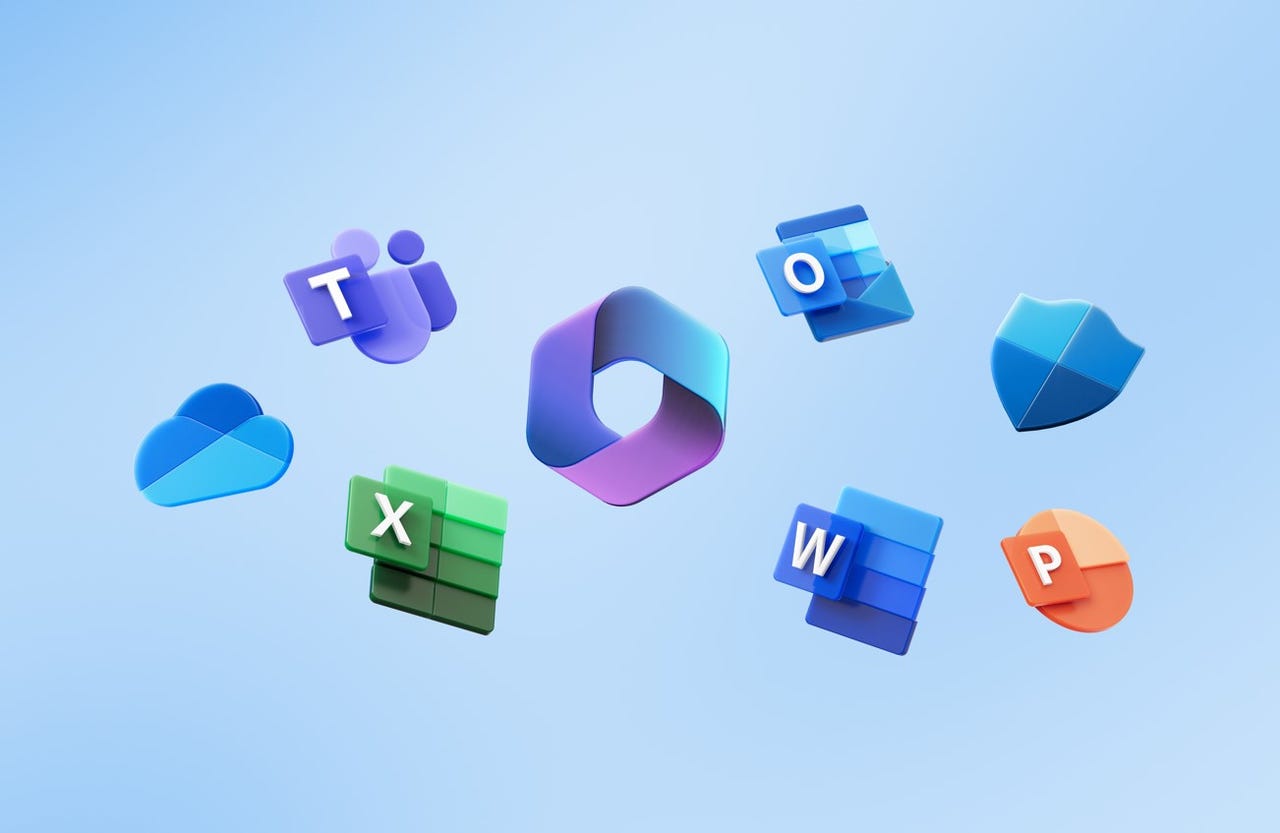































 Credit: Microsoft
Credit: Microsoft Microsoft will be updating its unified Office app, unsurprisingly going with the Microsoft 365 branding, starting in November. But the company is hoping to do more than just change the name of the app, which works across mobile devices, the Web, and Windows. Officials are counting on the rebranded Microsoft 365 app to help Microsoft demonstrate how different good old Word, Excel, PowerPoint, and other Office apps have become in recent years.
The backstory: In 2018, Microsoft launched the Office app for Windows 10 and, later, mobile devices. That app, which was the successor to the My Office app for Windows users, was designed to help users more quickly switch between the apps that constituted the Office suite and more easily find recently used documents.
The Office app also is perfect for people like me: Those who find the full Office apps to be overkill for most tasks I want to do, but who still need to use certain Office features on occasion.
In 2020, Microsoft rebranded some (but not all) of its Office 365 subscription plans as "Microsoft 365." At the Ignite 2022 conference today, Oct. 12, Microsoft officials announced plans to rebrand the Office app as the Microsoft 365 app. Officials also said they are planning to add some new features to the app, including new capabilities in the Feed, which will showcase shared files from people with whom a user collaborates; a redesigned Apps module that will provide access to any Microsoft 365 app and related third-party apps; and Tagging, a way for users to organize their work regardless of where files are stored.
Also: Microsoft moves forward with Edge Workspaces browser-based collaboration feature
But Microsoft officials think the integration among the Office parts is as much, if not more, of a selling point with the Microsoft 365 app as are the individual new features. The unified Office app (which was aptly code-named Union when it originally debuted) and now the Microsoft 365 app make certain tasks, such as signing a PDF, capturing text from an image, and scanning a document and turning it into a PDF, quick and fairly easy.
The Microsoft 365 app also showcases a lot of the more recently added capabilities in Office. Embeddable Loop components, for example, which provide users with a way to keep their charts, tables, spreadsheets, and other pieces of content updated in real time and sharable, will work across the various pieces of the unified Office app.
Microsoft is hoping the Microsoft 365 app will highlight how Office has evolved, said Jared Spataro, Microsoft's corporate vice president of Modern Work.
"The capabilities [of Office] outgrew the brand itself," Spataro said. Microsoft is hoping that rebranding the app to Microsoft 365 will "help stretch people's understanding of Office to accommodate all the new things we are adding," he said.
Also: Microsoft's competitor to Notion, its Loop app, is now in private preview
The Microsoft 365 app will be available in a phased rollout beginning in November starting with the Web version. It will be available on local devices, as a Progressive Web App and on the Web (the Office.com address will continue to work). As is currently the case with the Office app, Microsoft plans to offer a free version of the Microsoft 365 app, and a version with more premium features that is available to consumers and business users who have a Microsoft 365/Office 365 subscription.
In other rebranding news at Ignite, Microsoft is rebranding its SharePoint Syntex product as Microsoft Syntex. SharePoint Syntex, which Microsoft launched in 2020, was the first piece of Microsoft's "Project Cortex" knowledge-management service to go commercial. At that time, Microsoft explained SharePoint Syntex as the AI content understanding and automation piece of Cortex, and said it uses machine teaching technology to sort, tag, route, and store content, such as expense reports and invoices, contracts, and various other kinds of documents.
Microsoft Syntex is that same core product, but with 11 new services and enhanced capabilities such as annotation, contract management, and order processing, with more to come in 2023, officials said. Microsoft plans to add a new pay-as-you-go option to Microsoft Syntex and officials said they will explain the new pricing and licensing in early 2023. Current SharePoint Syntex customers will have the option of trying out the pay-as-you-go model in preview, and either switching over to it at general availability or staying with the current terms for document understanding through the remainder of their current license agreement terms.
 Hot Tags :
Tech
Services & Software
Hot Tags :
Tech
Services & Software